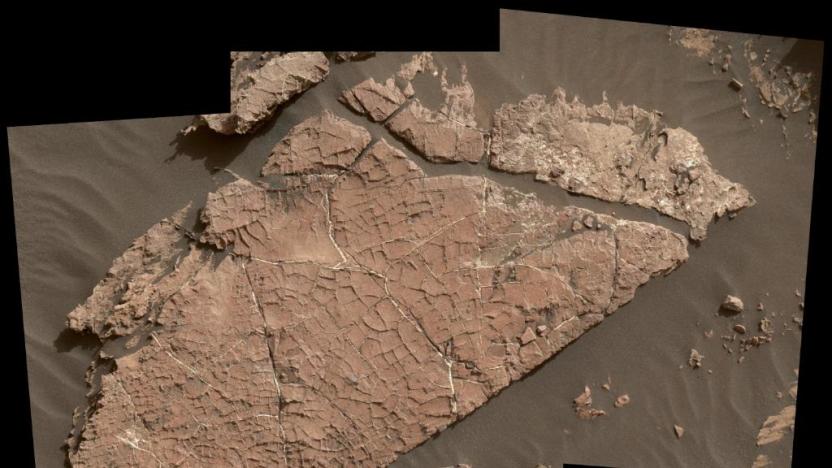MarsWater
Latest

NASA's Curiosity finds new water evidence in possible cracked mud
NASA's four-year-old Curiosity rover spent 2016 discovering new clues to Mars' history, including veins potentially from evaporated lakes and mineral deposits suggesting the planet once had oxygen. The craft spent the beginning of 2017 examining a newly-discovered natural formation: Rock cross-cut with ridges, which are probably mud cracks.

Mars faced an ice age 400,000 years ago, and it's still recovering
We've known for a while now that Mars has water frozen in ice. And analyzing that water has been a key goal to understanding how the planet has changed over time, especially if its presence meant it once held life. Today, a newly published study concludes that Mars is ever-so slowly exiting an ice age that ended 400,000 years ago.

NASA's Curiosity rover finds ancient streambed on Mars, evidence of 'vigorous' water flow
Curiosity may have spent a while limbering up for the mission ahead, but now it's found evidence of an ancient streambed on Mars that once had "vigorous" water flow. Photos of two rock outcroppings taken by the rover's mast camera between the north rim of Gale Crater and the foot of Mount Sharp reveal gravel embedded into a layer of conglomerate rock. The shape of the small stones indicate to NASA JPL scientists that they were previously moved, and their size (think from grains of sand to golf balls) are a telltale sign that water did the work instead of wind. Evidence of H2O on Mars has been spotted before, but this is the first direct look at the composition of riverbeds NASA has observed from above. According to Curiosity science co-investigator William Dietrich, it's estimated that water flowed at the site anywhere from thousands to millions of years ago, moved at a clip of roughly 3 feet per second and was somewhere between ankle and hip deep. "A long-flowing stream can be a habitable environment," Mars Science Laboratory Project Scientist John Grotzinger said. "It is not our top choice as an environment for preservation of organics, though. We're still going to Mount Sharp, but this is insurance that we have already found our first potentially habitable environment."

